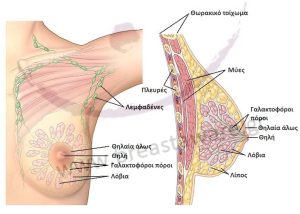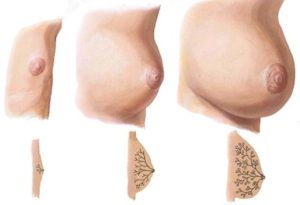
Anatomy and Development of the Breast: Essential Information
The human breast is a specialized gland that develops over the chest muscles and plays a key role in both breastfeeding and oncology. By understanding its structure and development, we can gain a better insight into body physiology and breast health.
Breast Anatomy
The breast is composed of two main types of tissue:
- Mammary gland, Responsible for milk production
- Adipose tissue, Provides shape and volume
The mammary gland contains 15-20 lobes, which contain smaller units, the lobules, where milk is produced. The milk is transported through the lactiferous ducts towards the nipple. The areola – the darkened area around the nipple – contains glands that protect and moisturize the skin during breastfeeding.
The Lymphatic System and Breast Cancer
The lymphatic system of the breast is critical for the body's defense and plays an important role in the spread of cancer cells. The axillary lymph nodes are the most common site of metastasis in cases of breast cancer. Their evaluation is crucial for the prognosis and treatment selection..
Breast Support Structures
The shape and support of the breast depend on:
- The Cooper’s ligaments
- The muscular layer of the chest
- The skin covering the breast
Asymmetry between the two breasts is normal. Up to 25% of women exhibit a noticeable difference in size. Despite the common association with breastfeeding, the main factors contributing to breast ptosis are: smoking, parity, weight fluctuations and of course the gravity
Breast Development: How Does It Occur?
Breast development from gestation to adulthood
- 4th week of gestation: the appearance of mammary ridges
- 16th week: the first are formed lactiferous ducts
- 20η – 24η week: the formation of the areola
Throughout the adolescence, under the influence of estrogens, growth hormone and of gonadotropins, the breast develops gradually. Completion of maturation occurs during the first pregnancy, characterized by an increase in breast size and darkening of the nipple–areolar complex — a natural aid for the newborn.

Hormonal Regulation and Lactation
Prolactin prepares the mammary glands for milk production as early as the second trimester, but elevated levels of estrogen and progesterone during pregnancy inhibit the onset of lactation. After childbirth, the sudden drop in these hormones allows prolactin to activate milk secretion.
During breastfeeding, nipple stimulation reflexively triggers the release of oxytocin from the hypothalamus, which causes contraction of the myoepithelial cells surrounding the lobules, leading to milk ejection through the lactiferous ducts.
It is noteworthy that the breast size does not affect milk production..
Breast Changes in Menopause
During menopause, the decline in estrogen levels leads to atrophy of the mammary gland and its gradual replacement by adipose tissue. The result is a breast:
- Less elastic
- Having decreased density
- More susceptible to ptosis and dehydration
What to Remember
The knowledge of breast anatomy and development helps in the early detection of changes and is crucial for prevention and self-examination. By monitoring your breast health, you strengthen your connection with your body and enhance your control over your well-being.
breastaware.gr – Greece’s first online platform devoted to providing information on breast health.
Bibliography:
- Sadler TW. Langman's Medical Embryology. 14th ed. Philadelphia: Wolters Kluwer; 2019.
- Standring S, editor. Gray’s Anatomy: The Anatomical Basis of Clinical Practice. 42nd ed. New York: Elsevier; 2020.
- Guyton AC, Hall JE. Textbook of Medical Physiology. 14th ed. Philadelphia: Elsevier; 2020.
- Raju TNK. Breastfeeding and the Use of Human Milk. Pediatrics. 2022;150(1):e2022057988. doi:10.1542/peds.2022-057988
- Howard BA, Gusterson BA. Human breast development. J Mammary Gland Biol Neoplasia. 2000;5(2):119-137. doi:10.1023/A:1009562400601
- Ramsay DT, Kent JC, Owens RA, Hartmann PE. Ultrasound imaging of milk ejection in the breast of lactating women. Pediatrics. 2004;113(2):361-367. doi:10.1542/peds.113.2.361
- Neville MC, Morton J. Physiology and endocrine changes underlying human lactogenesis II. J Nutr. 2001;131(11):3005S-3008S. doi:10.1093/jn/131.11.3005S
- Russo J, Russo IH. Development of the human mammary gland. In: Neville MC, Daniel CW, editors. The Mammary Gland: Development, Regulation, and Function. Boston: Springer; 2000. p. 67–93.
- American Cancer Society. Breast Cancer Facts & Figures 2023–2024. Atlanta: American Cancer Society, Inc.; 2023.
